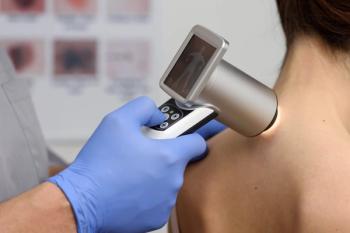
How AI Can Help Payers Streamline Prior Authorizations to Save Time, Improve Member Care
Many prior authorizations requests still come in by fax. Natural language processing and artificial intelligence can extract and use information from faxes.
The findings below were part of a
“Our analysis suggests that artificial-intelligence-enabled prior authorizations can automate 50% to 75% of manual tasks, boosting efficiency, reducing costs, and freeing clinicians at both payers and providers to focus on complex cases and actual care delivery and coordination,” said the McKinsey study.
To understand why McKinsey’s researchers were able to make such a bold claim, let’s step back and review how most health insurers receive prior authorization requests today. A
That means a large portion of the PA requests your staff has to process come in as unstructured data on fax machines. Digital fax pages are technically “images,” as well, not data. And that means your staff needs to manually review these faxes, prioritize the cases, and often re-enter the information into a database by hand.
The inefficiencies of unstructured data
Why? Because the burdens of reviewing and processing unstructured data — in PAs submitted as faxes, paper or cloud — creates enormous challenges for payer organizations. Just a few examples:
- Payers have no way of automatically sorting and prioritizing traditional faxes according to member need or urgency.
- Manually reviewing and acting on fax-based PAs takes staff longer and results in slower responses to all PA requests.
- Manual data re-entry of unstructured fax content increases the chances of human error — which can both lead to poorer health outcomes and increase the ultimate costs of member care.
Think of it this way: If you received 100 names in an Excel file, and you needed to rearrange them into alphabetical order, that task would require only a few clicks. The software has the ability to recognize the letters in the names and the built-in intelligence to order them from A to Z.
But now imagine that instead, you received those 100 names on a piece of paper. Resorting them alphabetically will no longer be a simple matter of clicking a few buttons. Someone is going to need to manually rewrite every name on the list — or manually type them into a database.
That’s a very simple analogy, but it underscores the difference between an AI-enabled prior authorization process and the name-on-paper process that your staff is probably struggling with every day.
How to address the challenge
Manually handling PAs as inbound fax documents is among the least cost-effective ways to manage the process. But unfortunately, as long as providers continue to rely on fax machines and paper faxes to transmit health data — and an
1. Digital cloud faxing
Even if your providers continue to submit their PAs using fax machines, your staff doesn’t need to receive the requests as hardcopy documents at your end.
The right digital cloud fax solution — one designed to meet the unique needs and constraints of the healthcare industry — can ingest inbound fax content into EHRs or other records systems. It can also leverage basic optical character recognition (OCR) to identify key data in your faxes, such as member names, ID numbers, names of
physicians and so on.
This simple addition to your organization’s digital environment can remove several time-consuming, manual steps from the review process — to help your staff streamline their PA responses and ultimately save your organization money.
2. Natural language processing
Natural language processing (NLP) takes digital cloud faxing another important step toward automating the handling of prior authorizations — or any inbound fax content that your staff would otherwise need to manually review and process.
NLP embedded in your cloud fax platform will be able to automatically sort and organize key information in an inbound fax, and even take a next step if necessary. For example, you can instruct your NLP solution to scan every inbound fax for key terms — “urgent,” for example — and prioritize those requests by sending alerts to the right people in your organization.
Because NLP employs machine learning, it will continually grow more adept at identifying key terms and concepts as it consumes more data. It can even learn to read handwritten notes on fax pages.
3. Artificial intelligence
Your organization will see the greatest operational benefits — both in terms of reducing the costs of your prior authorization responses and helping to deliver more timely care to your members — when you employ artificial intelligence to your PA processes.
Artificial intelligence brings together all of the capabilities listed above while adding layers of learning, thinking, and continuous improvement to your fax solution.
The McKinsey study concluded that “an AI-enabled workflow requires fewer steps,” automating most of the administrative steps most payers handle manually today. AI can also benefit payers by sorting requests according to high and low priority as well as those that can be handled by RNs and those that need doctor input.
The bottom line
Because fax (both paper and digital) remains one of the most common methods for providers to submit prior authorization requests, payers need to employ new tools and technologies to make their ability to receive, review, and process these requests as efficiently and reliably as possible.
The best, easiest way to do this today is to implement the right digital cloud fax solution with built-in AI and NLP capabilities. Doing so will lessen the burden on payers’ staff, streamline their ability to respond to PAs, reduce the overall costs to the company, and improve member outcomes.
Bevey Miner is health IT strategist for Consensus Cloud Solution.
Newsletter
Get the latest industry news, event updates, and more from Managed healthcare Executive.






















































